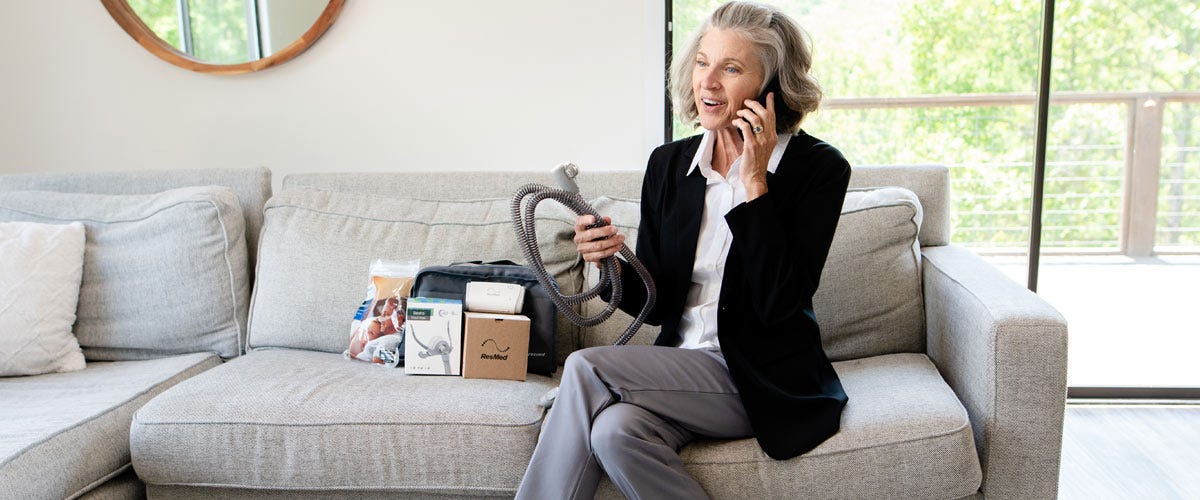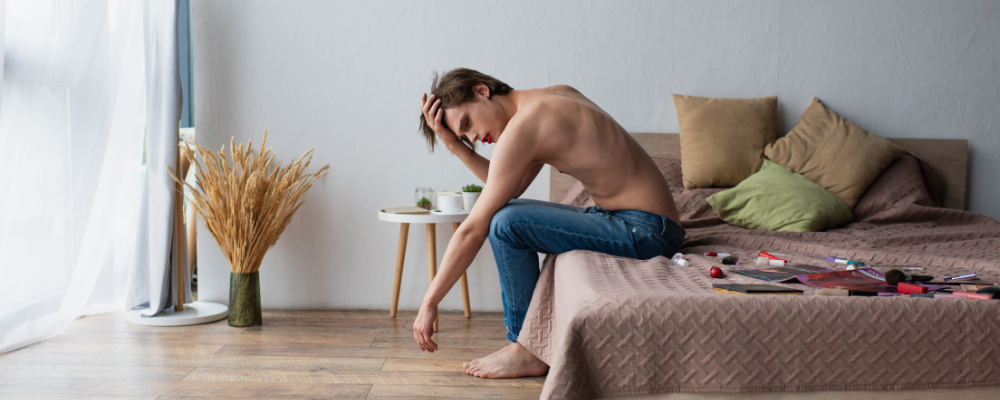Way to go – you’ve taken the first step toward improving your health by beginning your CPAP therapy journey! But the road to sleep health doesn’t stop there. Did you know that maintaining a regular CPAP replacement schedule is an essential part of your obstructive sleep apnea treatment? Read on to find out why.
Why Do I Need to Replace My CPAP Supplies?
Over time as you use your CPAP equipment the parts and accessories can become stretched, torn, and worn out. Facial oils, dust, mold and contaminants can collect and begin to slowly break down the materials. This can cause air leaks in your mask, cushion, or tubing, which means you may not be getting the exact level of continuous positive airway pressure prescribed by your healthcare provider. The tiny cracks and holes created in these parts make it easier for bacteria, mold, viruses, allergens, and other irritants to build up and flourish, increasing your risk for getting sick.
Replacing Your CPAP Machine
A PAP machine, whether it's a CPAP, APAP, or BiPAP, should be replaced every five years. This is not only to maintain top working condition, but also so you can stay up to date on the latest therapy options. PAP technology has progressed a lot in the past few years, and there's no sign it's slowing down. You may find that the newer comfort features make all the difference in how easily you can stick with your treatment. Always be sure to get a new CPAP machine when your insurance allows!
Replacing Your CPAP Mask
The CPAP mask frame is the part that connects to the headgear and holds the mask cushion in place. It is made of durable material but it does come into contact with your facial oils, bacteria, and dead skin cells. It should be cleaned regularly and replaced every three months.
Replacing Your Mask Cushions
The cushions are the soft components that form the seal around your airway and ensure the pressurized air is delivered efficently and comfortably. Since they play such a crucial role in the whole system and they are in constant contact with your nose and mouth, they need to be replaced more often.


Nasal cushions and nasal pillows should be replaced every two weeks. For a full face mask, which covers both nose and mouth, you can wait up to a month to replace.
Replacing Your Headgear
Your CPAP mask headgear is made of soft, stretchy material and though it may look fairly clean, you’ll still want to replace it every six months. If it loses elasticity, the seal of your mask could be compromised and the air pressure decreased, resulting in less effective treatment. The same goes for your chin strap; the more stretched out it is, the more likely you are to slip back into mouth breathing during the night.
Replacing CPAP Tubing
CPAP tubing should be replaced every 3 months. When small cracks begin to form in the plastic of the tubing it increases the risk for contaminants to enter your lungs. The condensation that collects in the tubing also creates the perfect environment for mold to flourish.
Replacing Humidifier Water Chambers
Regardless of whether you have heated humidification or not, the water chamber should be replaced every 6 months. It's also important to replace the distilled water in the chamber after every use.
Replacing CPAP Filters
Your CPAP filters do a lot of work inside of your CPAP device by filtering dust and other particles of the air. This helps to prevent you from inhaling them and can protect your supplies from breaking down! Disposable filters should be replaced every two weeks and reusable filters need to be replaced every six months.
Cleaning Your CPAP Supplies
Regularly cleaning your CPAP supplies will ensure you get the maximum benefit from them. Separate the tubing from the CPAP mask and dissasemble all the parts and pieces. Wash them in warm soapy water for about five minutes, rinse, and allow them to air dry. You can also use vinegar. but only after a thorough hand washing. You should never use bleach or other harsh household cleansers.
While nothing can replace hand washing your supplies, a CPAP sanitizer is an excellent tool to use in conjunction with it. If you have trouble keeping up with manufacturer recommended cleaning schedule, a sanitizer can reduce your risk for getting sick.
Using a sanitizer like the Lumin eliminates 99% of bacteria on your CPAP supplies. You can also use it to sanitize whatever fits inside, including toothbrushes, your children’s toys, hearing aids, keys, and more without the use of harsh chemicals or water.
How Aeroflow Sleep Can Help
With Aeroflow Sleep, you’ll automatically be notified when new CPAP supplies are covered by your insurance company. Your dedicated Sleep Specialist will connect with you to confirm your upcoming shipment, and then we’ll ship it straight to your front door – it’s that easy! Click below to fill out the form to see what supplies you can get covered up to 100% through your insurance.












